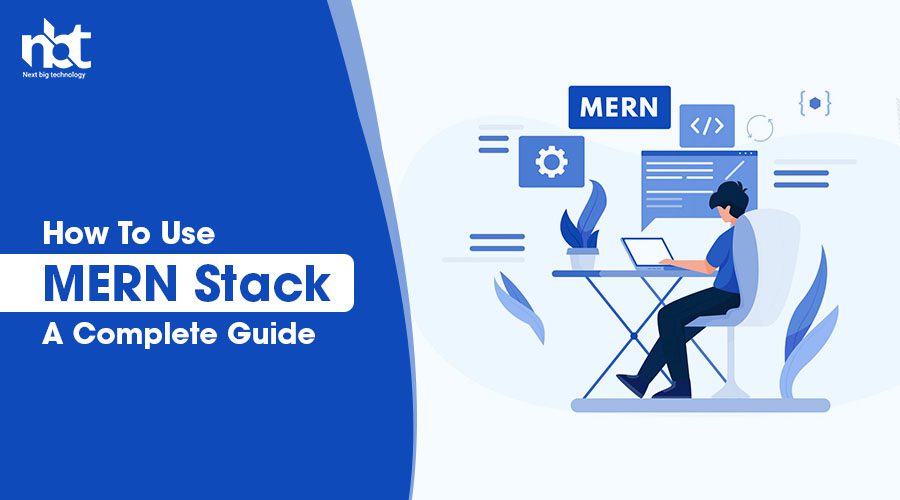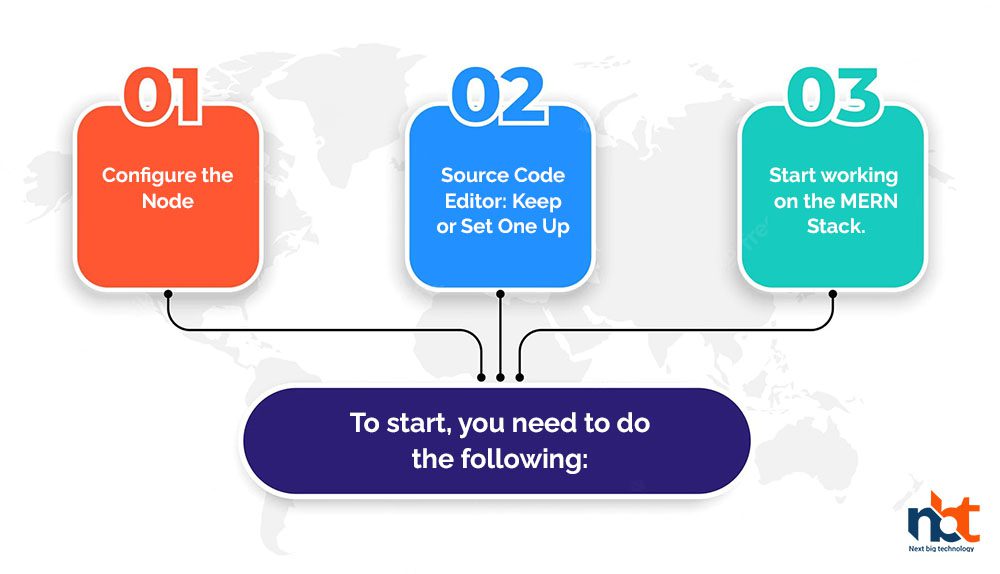The MERN Stack consists of the technologies MongoDB, Express, React/Redux, and Node.js. Many developers rely on the MERN Stack, a popular JavaScript stack, to create cutting-edge, single-page online apps. This Groovy Web MERN stack tutorial teaches you how to design your Stack from the ground up, beginning with the presentation layer (React), then the middle layer (Express and Node), and finally, the back layer (MongoDB).
MERN stack is getting popular day by day for web application and mobile application development, people are started using it a lot and its covering market day by day.
This MERN stack tutorial will guide you through using these four technologies to build a basic app that displays employee information using React. The information will then be broadcast during the show.
Table of Contents
A Tutorial on Beginning Use of the MERN Stack
The initial steps are listed below.
Maintain or Install an Editor for Source Code
The majority of text editors can follow this tutorial. However, we will use the VS Code editor with the prettier and vs. code icons plugins to show everything. The VS Code editor is an excellent choice for this tutorial because it has a built-in editor that supports code completion and syntax highlighting and an extension system that allows us to add additional features.
Configure a Node in Your Network
It is easier to install Node if you have the Long-Term Support (LTS) version or the most recent stable release. If you do not have the LTS or the most recent stable release, you should use the latest long-term support (LTS) version.
Use the MERN Stack productively.
Using MERN, we may generate detailed responses to challenging problems. To take advantage of the capabilities of the MERN Stack, we will employ it. This undertaking will require the creation of a backend and a front end. React will be utilized on the front end, while MongoDB, Node, and Express will be utilized on the back end. Here, “frontend” and “backend” will distinguish between the client and the server.
Create a new folder named MERN in your file manager. When a new project is begun, the papers linked with it will be saved here. Later, we will construct a custom client application using React Native.
The next step is to create a directory and set a name server to the backend.
Accessing the previously-created server folder is the first step in constructing the server. The package will subsequently be activated with npm init. JSON.
The following are some of the most recently used words:
- By performing the MongoDB command, you may install the MongoDB database driver and enable Node.js apps to connect to and execute operations against the MongoDB database.
- js, a framework for web application development, may be installed with the aid of Express. (This will make our task more manageable.)
- Cors’s primary objective is to include a package that promotes resource sharing among Node.js-based websites.
- The dozens command can install a module that reads from and writes to the process’s.env file. This allows configuration files to be kept in a location apart from the program’s code.
- The package.json file lists the dependencies that have been installed.
- The version number of each package must be displayed.
Approaching MongoDB Atlas
Now is the time to connect our server to its data source. To accomplish this, we will utilize the MongoDB Atlas database.
MongoDB Atlas is the most trustworthy and secure cloud-based database available.
Numerous features and capabilities of MongoDB Atlas can be utilized with the database’s free-tier cluster. This cluster may be utilized for as long as you choose.
A cluster configuration file containing the Atlas connection string exists. Check out the Getting Started with Atlas tutorial to discover how to sign up for Atlas and configure your first cluster.
Also read : MEAN Stack Vs. MERN Stack: A Comparison Between the Two Tech Stacks
Completeness of the database Detaching from the server. Our next destination will be the Server API’s permanent abode. It is advised that a “routes” folder be created. Put the record within it..js code within it to initiate the process.
Beginning the procedure
Offer a means for the client to communicate with the API after the desired functionality has been implemented.
The create-react-app command is used to construct your application and launch the front end of the to-do app. You can complete this step by browsing to the root directory of your backend code and running the mern-todo folder’s instructions:
Add a new client folder in your mern-to-do folder once completed. The required React code must be inserted here.
We require a working React application.
Before testing can begin, the project’s root directory must have multiple files. These files include – JSX – React components – CSS – JS – Images – Videos.
Nodemon is used to monitor and administer the server. If Nodemon detects a modification to the server’s source code, it will restart the service with the new code.
Generate Reaction Element
React’s emphasis on code reuse and modularity is two of its many merits. Your to-do application will have two stateful and one stateless subsystem.
Assuming these files are successfully stored, your to-do app will be completely functional and ready to use. You can utilize the MERN stack development company to add a new task, delete an existing task, or browse a list of all your tasks.
Conclusion
As part of this course, you constructed a to-do list app using the MERN stack. You have developed a simple frontend stack utilizing React and Express.js for backend connectivity. Additionally, you have constructed a MongoDB database to hold completed activity information. You will use this database to store information about each activity, including the date, the person who completed it, and the activity itself.
Thanks for reading our post “How To Use MERN Stack: A Complete Guide”, please connect with us for any further inquiry. We are Next Big Technology, a leading web & Mobile Application Development Company. We build high-quality applications to full fill all your business needs.














